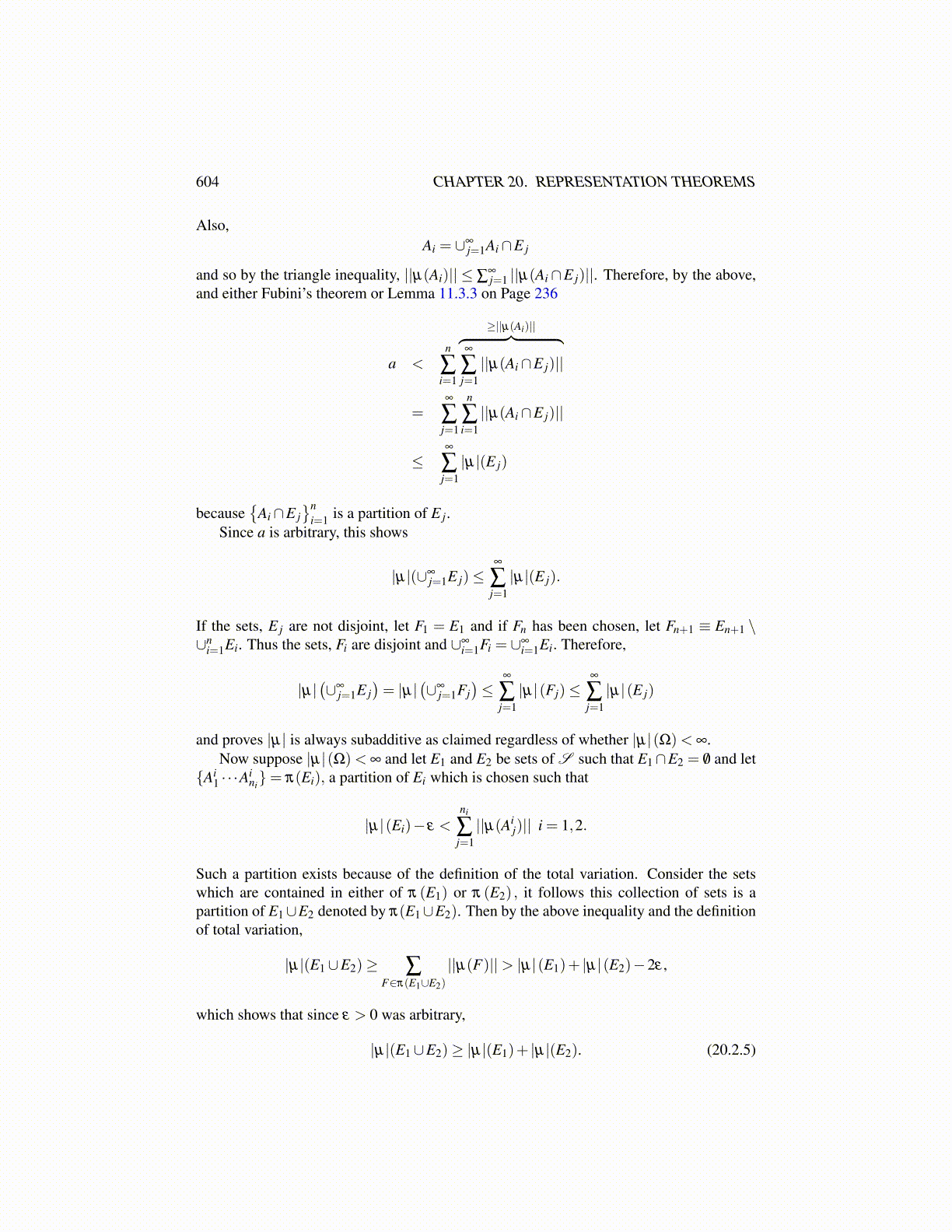
604 CHAPTER 20. REPRESENTATION THEOREMS
Also,Ai = ∪∞
j=1Ai∩E j
and so by the triangle inequality, ||µ(Ai)|| ≤ ∑∞j=1 ||µ(Ai∩E j)||. Therefore, by the above,
and either Fubini’s theorem or Lemma 11.3.3 on Page 236
a <n
∑i=1
≥||µ(Ai)||︷ ︸︸ ︷∞
∑j=1||µ(Ai∩E j)||
=∞
∑j=1
n
∑i=1||µ(Ai∩E j)||
≤∞
∑j=1|µ|(E j)
because{
Ai∩E j}n
i=1 is a partition of E j.Since a is arbitrary, this shows
|µ|(∪∞j=1E j)≤
∞
∑j=1|µ|(E j).
If the sets, E j are not disjoint, let F1 = E1 and if Fn has been chosen, let Fn+1 ≡ En+1 \∪n
i=1Ei. Thus the sets, Fi are disjoint and ∪∞i=1Fi = ∪∞
i=1Ei. Therefore,
|µ|(∪∞
j=1E j)= |µ|
(∪∞
j=1Fj)≤
∞
∑j=1|µ|(Fj)≤
∞
∑j=1|µ|(E j)
and proves |µ| is always subadditive as claimed regardless of whether |µ|(Ω)< ∞.Now suppose |µ|(Ω)< ∞ and let E1 and E2 be sets of S such that E1∩E2 = /0 and let
{Ai1 · · ·Ai
ni}= π(Ei), a partition of Ei which is chosen such that
|µ|(Ei)− ε <ni
∑j=1||µ(Ai
j)|| i = 1,2.
Such a partition exists because of the definition of the total variation. Consider the setswhich are contained in either of π (E1) or π (E2) , it follows this collection of sets is apartition of E1∪E2 denoted by π(E1∪E2). Then by the above inequality and the definitionof total variation,
|µ|(E1∪E2)≥ ∑F∈π(E1∪E2)
||µ(F)||> |µ|(E1)+ |µ|(E2)−2ε ,
which shows that since ε > 0 was arbitrary,
|µ|(E1∪E2)≥ |µ|(E1)+ |µ|(E2). (20.2.5)